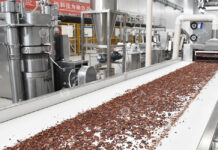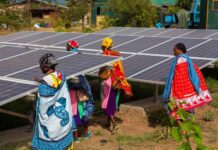
Liberia’s first commercial gold mine – which is owned by AIM-listed Aureus Mining – appears to be getting off its knees following the outbreak of the Ebola virus and teething problems encountered during its commissioning phase.
The New Liberty Gold Mine is located in the North West part of the country, within the Southern Block of the 100%-owned Bea Mountain mining licence. This licence covers 478 square kilometres and has a 25-year, renewable, mineral development agreement. The company has sought permission from its lenders – which include Rand Merchant Bank and Nedbank – to defer first payment until April 4.
New Liberty has an estimated proven and probable reserve of 8.5 million tonnes (Mt) with 924 thousand ounces (Koz) of gold grading 3.4 grams per tonne (g/t). This should support mining from an open pit over an eight-year life-of-mine with annual production of 119Koz for the first six years.
Work on the mine began in 2013. “We then went head first into the Ebola crisis,” says Aureus CEO, David Reading. The operations also experienced teething problems – with crushing and milling, as well as with the carbon-in-leach processing circuit.
The company put out an update on Tuesday March 2 that indicated it had made good progress in overcoming these obstacles. The mine produced 9Koz of gold in February from 90K tonnes processed by the plant, with a 90% recovery rate. Year-to-date the mine has produced 14Koz of gold.
The plant’s nameplate capacity is 1.1Mt of ore per annum. “We are almost there. We are aiming to produce 90 to 100Koz this year,” says Reading. The mine will probably need some flexibility from its financiers with respect to meeting the obligations on its $110 million outstanding debt. But there does appear to be a healthy margin in its operating activities. Reading estimates the all-in sustaining cost should come in below $900/oz. With the gold price at $1,240/oz, it leaves the company some headway should the planned production be executed accordingly.
What is negative from a cost point of view, is that the geometry of the orebody is quite steeply dipping. “So we have to move quite a bit of waste,” says Reading. The stripping ratio is approximately 14-15 to 1. “In costs per gram, this means we give up one gram per tonne to cover the cost of stripping. So we are effectively a 2.4g/t miner with no strip.”
The banks haven’t rescheduled the debt, so the capital repayments remain the same. The $110 million in bank debt in various tranches was secured on favourable terms – including all costs it came in under 6% a year, linked to Libor. “But the banks do want to see a new life-of-mine plan which would give much more detail on annual production,” says Reading. Aureus plans on releasing this at the end of the month.
In terms of mining tenure, Aureus has a mining licence valid for 15 years which can be renewed for a further 25 years. There is a 3% gross royalty on gold sales. The government enjoys a 10% free carried interest, and the mine is subject to a 25% corporate tax, but only once all sunk costs ($200 million) have been recouped.
The company’s share price has been hit hard. Despite spending $200 million on developing the mine, Aureus’s entire market capitalisation at the close of trading on Thursday was just $46 million. So there can be substantial upside to the share price if production is forthcoming. “I am confident we will make money going forward,” says Reading.
Source: Mineweb


























